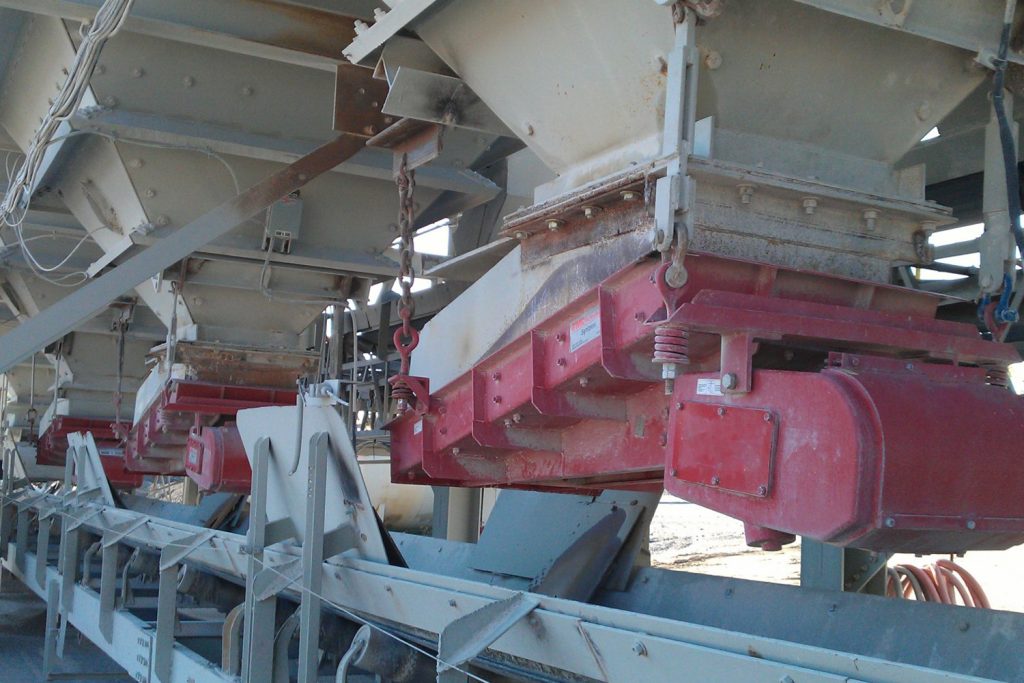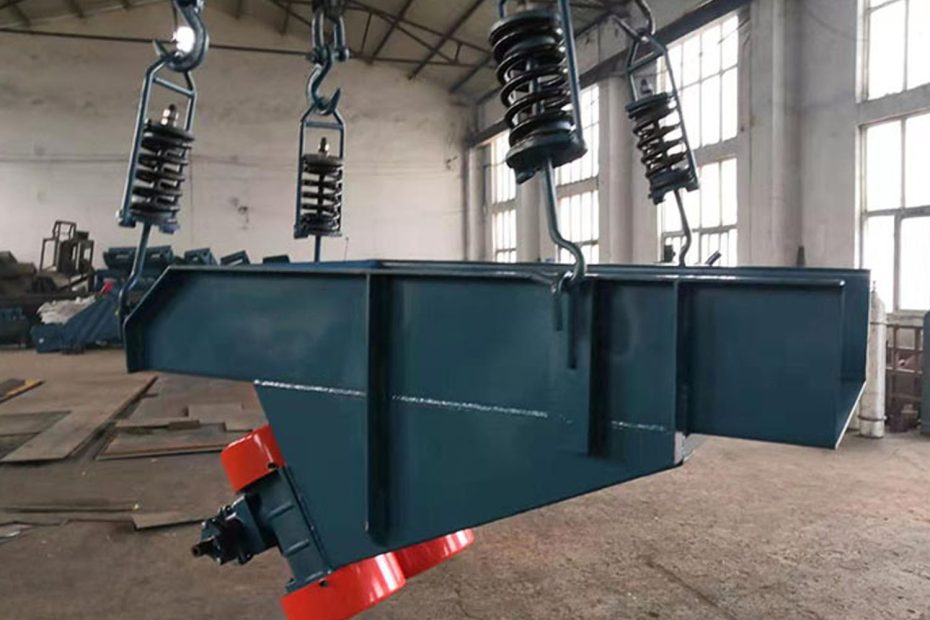Vibrating feeder is a device that uses the principle of vibration to feed materials. It has a series of advantages such as high output, low energy consumption, small size, simple structure, easy maintenance and repair, and easy to realize automatic control.
The vibrating feeder is suitable for a wide range of materials. It has a good conveying effect for granular materials with a particle size of more than 0.1 mm, general block materials, large block materials with a block size of 400~500 mm, and large block materials with a block size of more than 1 meter. In addition, it can also convey powdered materials (for powdered materials that are easy to fly, the bearing components should be made into a closed structure). After taking appropriate measures, it can also convey high-temperature materials and highly corrosive materials.
Self-synchronous inertial vibrating feeder is an advanced vibrating feeding equipment with the characteristics of small size, light weight, simple and compact structure, easy installation and maintenance, low operating cost, high efficiency, large feeding capacity, and low noise. It works under resonance, with stable amplitude, reliable operation, and strong adaptability to various materials.

The structure of the self-synchronous inertial vibrating feeder
The self-synchronous inertial vibrating feeder is mainly composed of a feeding trough, an exciter, a spring support, a transmission device, etc.
The exciter of the self-synchronous inertial vibrating feeder is composed of a pair of excitation motors with nearly the same parameters. The two excitation motors are usually installed in parallel on both sides of the rear of the trough or below the trough, and are symmetrical to the longitudinal symmetry plane of the feeder.
The angle between the axes of the two excitation motors and the plane of the bottom of the trough and the required vibration direction angle are complementary angles. The axes of the two excitation motors can also be perpendicular to the symmetry plane of the trough and installed at the rear of the feeder trough. At this time, the symmetry of the whole machine about the longitudinal symmetry plane of the trough should not be destroyed. In this case, the angle between the motor base and the plane of the bottom of the trough should also be complementary angles to the required vibration direction angle. The structure of the shock absorber is basically the same as that of the shock absorber of the electric vibration feeder.
Working principle of self-synchronous inertial vibrating feeder
The working principle of self-synchronous inertial vibrating feeder is to use the vibration generated by the vibrator to make the feeding trough vibrate in a reciprocating linear direction along the inclined direction, so as to realize the continuous flow and conveying of materials.
According to the self-synchronous principle, after the two motors are started, they will quickly enter the synchronous state, that is, they will run at the same speed. The inertial force generated by the eccentric blocks of the two motors will cancel each other in the direction of the two axis connection line, and superimpose as an exciting force in the direction perpendicular to the two axis connection line. It changes according to the sine law, and this exciting force enables the vibrating feeder to obtain the vibration necessary for conveying materials.
Conclusion
The self-synchronous inertial vibrating feeder is used to feed block, granular and powdery materials from the storage bin or hopper to the receiving device evenly, continuously and quantitatively. The equipment can also add functions such as energy consumption braking, fast or slow feeding, remote control and stepless speed regulation according to user requirements. It is widely used in mining, metallurgy, coal, building materials, light industry, chemical industry, electricity, food and other departments.
